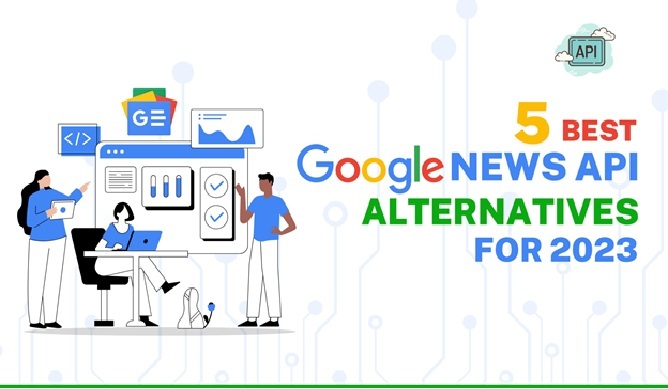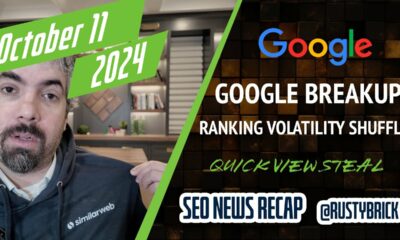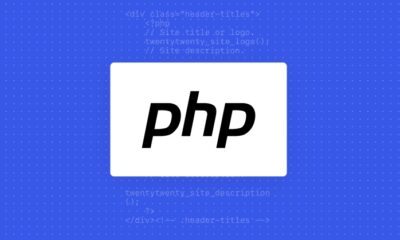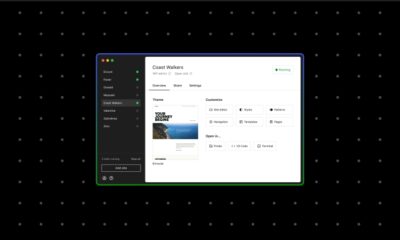MARKETING
5 Best Google News API Alternatives For 2023

Google News is a popular news aggregation service that uses algorithms to curate articles from various news sources. While it can be a convenient way to stay up-to-date on current events, some users may be looking for alternative news APIs that offer different features or a different approach to news curation.
What is Google News API?
Google News API is a service that allows developers to access and display news articles from Google News on their websites or applications. The API provides access to a wide range of news sources, including national and international news outlets, as well as news articles from specific categories such as business, technology, and entertainment. Using the API, developers can search for news articles based on keywords, sources, languages, and locations, and they can also customize the results by specifying the number of articles to retrieve and the formatting of the articles. The API is free to use and does not require an API key. However, it is subject to certain usage limits and terms of service.
Here are five of the best Google News API alternatives for 2023:
NewsData.io News API
NewsData.io is a news API that offers access to a wide range of articles from various sources. It allows users to search for articles by keyword, phrase, language, location, date range, and source. In addition to its search functionality, NewsData.io offers real-time updates and the ability to customize the search results display.
One unique feature of NewsData.io is its categorization of articles into various topics, such as business, technology, politics, and sports. This can be useful for users who are looking for articles on specific subjects and want to narrow their search results accordingly. You can track and collect news data in JSON, Excel, and CSV format.
NewsData.io also offers a range of pricing plans to suit the needs of different users. Its free plan allows for up to 200 requests per day, while its premium plan allows for up to 300,000 requests per day. This makes it a good option for both small and large organizations that need to access a large volume of articles.
Overall, NewsData.io is a comprehensive news API that offers a range of features for accessing and filtering articles from various sources. Its real-time updates, customizable search results, and categorization of articles into various topics make it a valuable resource for anyone looking to stay up-to-date on current or past events.
Bing News Search API
Bing News Search API is a web-based API offered by Microsoft’s Bing search engine that allows developers to search for and retrieve news articles from various sources. With the API, you can search for news articles based on keywords, sources, categories, and other criteria. You can also specify the language of the news articles you want to retrieve and the location from which you want to retrieve them. The API returns a list of news articles that match your search criteria, along with information about the articles such as their titles, descriptions, and dates of publication.
The Bing News Search API is available to developers through the Azure Cognitive Services suite of APIs and can be accessed using a variety of programming languages. It is a useful tool for developers who need to incorporate news data into their applications or websites.
NewsAPI.org
NewsAPI is a web-based API that provides access to news articles from thousands of sources around the world. It is designed to provide developers with an easy way to access news data and incorporate it into their applications. With NewsAPI, you can search for articles based on various criteria, including keyword, source, and date range. You can also get information about specific sources, such as their name, description, and category.
NewsAPI is a paid service, with different pricing tiers based on the number of API calls you need to make. It is a popular choice for developers who need to incorporate news data into their applications or websites and is used by many media companies, newsrooms, and other organizations around the world.
Yahoo News API

Yahoo News is a popular news platform that provides the latest news stories and headlines, comprehensive video coverages, opinions, and images to its users. The platform offers a wide range of news sources, including national and international outlets, as well as news articles from specific categories such as business, technology, and entertainment.
Yahoo offers the Yahoo News API as part of its BOSS API suite of developer tools. With the API, developers can access and display news articles from Yahoo News on their websites or applications. The API allows developers to search for news articles based on keywords, sources, languages, and locations, and they can also customize the results by specifying the number of articles to retrieve and the formatting of the articles.
Yahoo employs a simple pricing model based on the extent of usage. For receiving news results only, the price is $1.80 per 1,000 queries and limited to 50 results per query.
The RESTful API supports both XML and JSON data formats, making it easy for developers to integrate the API into their applications. Yahoo has provided helpful documentation to assist developers in integrating the API without many hurdles. Additionally, there is a vibrant BOSS developer community where developers can share ideas and ask questions about using the API.
Newscatcher API

Newscatcher is a news API that offers access to articles from over 10,000 sources in real-time. It also offers the ability to customize the search results display and to receive alerts for breaking news. The API can be used to retrieve articles from news websites, blogs, and other online sources, and can be accessed using a variety of programming languages.
The Newscatcher API offers a range of features and functionality, including the ability to search for articles by keyword, location, or language, as well as the ability to filter results by source, date, and other criteria. It also provides ability to include images and videos with the articles, and to customize the layout and appearance of the content.
To use the Newscatcher API, developers will typically need to sign up for an API key, which allows them to make a certain number of API requests each day. The API is typically accessed using a simple HTTP request, and the results are returned in a format such as JSON or XML.
Conclusion
Overall, these five news APIs offer a range of options for accessing and filtering articles from a variety of sources. Whether you are looking for a comprehensive news API with a wide range of sources or a more specialized API with real-time updates and customizable search results, there is likely an alternative to Google News that will meet your needs.
MARKETING
YouTube Ad Specs, Sizes, and Examples [2024 Update]
![YouTube Ad Specs, Sizes, and Examples [2024 Update] YouTube Ad Specs, Sizes, and Examples](https://articles.entireweb.com/wp-content/uploads/2024/06/YouTube-Ad-Specs-Sizes-and-Examples.jpg)
Introduction
With billions of users each month, YouTube is the world’s second largest search engine and top website for video content. This makes it a great place for advertising. To succeed, advertisers need to follow the correct YouTube ad specifications. These rules help your ad reach more viewers, increasing the chance of gaining new customers and boosting brand awareness.
Types of YouTube Ads
Video Ads
- Description: These play before, during, or after a YouTube video on computers or mobile devices.
- Types:
- In-stream ads: Can be skippable or non-skippable.
- Bumper ads: Non-skippable, short ads that play before, during, or after a video.
Display Ads
- Description: These appear in different spots on YouTube and usually use text or static images.
- Note: YouTube does not support display image ads directly on its app, but these can be targeted to YouTube.com through Google Display Network (GDN).
Companion Banners
- Description: Appears to the right of the YouTube player on desktop.
- Requirement: Must be purchased alongside In-stream ads, Bumper ads, or In-feed ads.
In-feed Ads
- Description: Resemble videos with images, headlines, and text. They link to a public or unlisted YouTube video.
Outstream Ads
- Description: Mobile-only video ads that play outside of YouTube, on websites and apps within the Google video partner network.
Masthead Ads
- Description: Premium, high-visibility banner ads displayed at the top of the YouTube homepage for both desktop and mobile users.
YouTube Ad Specs by Type
Skippable In-stream Video Ads
- Placement: Before, during, or after a YouTube video.
- Resolution:
- Horizontal: 1920 x 1080px
- Vertical: 1080 x 1920px
- Square: 1080 x 1080px
- Aspect Ratio:
- Horizontal: 16:9
- Vertical: 9:16
- Square: 1:1
- Length:
- Awareness: 15-20 seconds
- Consideration: 2-3 minutes
- Action: 15-20 seconds
Non-skippable In-stream Video Ads
- Description: Must be watched completely before the main video.
- Length: 15 seconds (or 20 seconds in certain markets).
- Resolution:
- Horizontal: 1920 x 1080px
- Vertical: 1080 x 1920px
- Square: 1080 x 1080px
- Aspect Ratio:
- Horizontal: 16:9
- Vertical: 9:16
- Square: 1:1
Bumper Ads
- Length: Maximum 6 seconds.
- File Format: MP4, Quicktime, AVI, ASF, Windows Media, or MPEG.
- Resolution:
- Horizontal: 640 x 360px
- Vertical: 480 x 360px
In-feed Ads
- Description: Show alongside YouTube content, like search results or the Home feed.
- Resolution:
- Horizontal: 1920 x 1080px
- Vertical: 1080 x 1920px
- Square: 1080 x 1080px
- Aspect Ratio:
- Horizontal: 16:9
- Square: 1:1
- Length:
- Awareness: 15-20 seconds
- Consideration: 2-3 minutes
- Headline/Description:
- Headline: Up to 2 lines, 40 characters per line
- Description: Up to 2 lines, 35 characters per line
Display Ads
- Description: Static images or animated media that appear on YouTube next to video suggestions, in search results, or on the homepage.
- Image Size: 300×60 pixels.
- File Type: GIF, JPG, PNG.
- File Size: Max 150KB.
- Max Animation Length: 30 seconds.
Outstream Ads
- Description: Mobile-only video ads that appear on websites and apps within the Google video partner network, not on YouTube itself.
- Logo Specs:
- Square: 1:1 (200 x 200px).
- File Type: JPG, GIF, PNG.
- Max Size: 200KB.
Masthead Ads
- Description: High-visibility ads at the top of the YouTube homepage.
- Resolution: 1920 x 1080 or higher.
- File Type: JPG or PNG (without transparency).
Conclusion
YouTube offers a variety of ad formats to reach audiences effectively in 2024. Whether you want to build brand awareness, drive conversions, or target specific demographics, YouTube provides a dynamic platform for your advertising needs. Always follow Google’s advertising policies and the technical ad specs to ensure your ads perform their best. Ready to start using YouTube ads? Contact us today to get started!
MARKETING
Why We Are Always ‘Clicking to Buy’, According to Psychologists

Amazon pillows.
MARKETING
A deeper dive into data, personalization and Copilots

Salesforce launched a collection of new, generative AI-related products at Connections in Chicago this week. They included new Einstein Copilots for marketers and merchants and Einstein Personalization.
To better understand, not only the potential impact of the new products, but the evolving Salesforce architecture, we sat down with Bobby Jania, CMO, Marketing Cloud.
Dig deeper: Salesforce piles on the Einstein Copilots
Salesforce’s evolving architecture
It’s hard to deny that Salesforce likes coming up with new names for platforms and products (what happened to Customer 360?) and this can sometimes make the observer wonder if something is brand new, or old but with a brand new name. In particular, what exactly is Einstein 1 and how is it related to Salesforce Data Cloud?
“Data Cloud is built on the Einstein 1 platform,” Jania explained. “The Einstein 1 platform is our entire Salesforce platform and that includes products like Sales Cloud, Service Cloud — that it includes the original idea of Salesforce not just being in the cloud, but being multi-tenancy.”
Data Cloud — not an acquisition, of course — was built natively on that platform. It was the first product built on Hyperforce, Salesforce’s new cloud infrastructure architecture. “Since Data Cloud was on what we now call the Einstein 1 platform from Day One, it has always natively connected to, and been able to read anything in Sales Cloud, Service Cloud [and so on]. On top of that, we can now bring in, not only structured but unstructured data.”
That’s a significant progression from the position, several years ago, when Salesforce had stitched together a platform around various acquisitions (ExactTarget, for example) that didn’t necessarily talk to each other.
“At times, what we would do is have a kind of behind-the-scenes flow where data from one product could be moved into another product,” said Jania, “but in many of those cases the data would then be in both, whereas now the data is in Data Cloud. Tableau will run natively off Data Cloud; Commerce Cloud, Service Cloud, Marketing Cloud — they’re all going to the same operational customer profile.” They’re not copying the data from Data Cloud, Jania confirmed.
Another thing to know is tit’s possible for Salesforce customers to import their own datasets into Data Cloud. “We wanted to create a federated data model,” said Jania. “If you’re using Snowflake, for example, we more or less virtually sit on your data lake. The value we add is that we will look at all your data and help you form these operational customer profiles.”
Let’s learn more about Einstein Copilot
“Copilot means that I have an assistant with me in the tool where I need to be working that contextually knows what I am trying to do and helps me at every step of the process,” Jania said.
For marketers, this might begin with a campaign brief developed with Copilot’s assistance, the identification of an audience based on the brief, and then the development of email or other content. “What’s really cool is the idea of Einstein Studio where our customers will create actions [for Copilot] that we hadn’t even thought about.”
Here’s a key insight (back to nomenclature). We reported on Copilot for markets, Copilot for merchants, Copilot for shoppers. It turns out, however, that there is just one Copilot, Einstein Copilot, and these are use cases. “There’s just one Copilot, we just add these for a little clarity; we’re going to talk about marketing use cases, about shoppers’ use cases. These are actions for the marketing use cases we built out of the box; you can build your own.”
It’s surely going to take a little time for marketers to learn to work easily with Copilot. “There’s always time for adoption,” Jania agreed. “What is directly connected with this is, this is my ninth Connections and this one has the most hands-on training that I’ve seen since 2014 — and a lot of that is getting people using Data Cloud, using these tools rather than just being given a demo.”
What’s new about Einstein Personalization
Salesforce Einstein has been around since 2016 and many of the use cases seem to have involved personalization in various forms. What’s new?
“Einstein Personalization is a real-time decision engine and it’s going to choose next-best-action, next-best-offer. What is new is that it’s a service now that runs natively on top of Data Cloud.” A lot of real-time decision engines need their own set of data that might actually be a subset of data. “Einstein Personalization is going to look holistically at a customer and recommend a next-best-action that could be natively surfaced in Service Cloud, Sales Cloud or Marketing Cloud.”
Finally, trust
One feature of the presentations at Connections was the reassurance that, although public LLMs like ChatGPT could be selected for application to customer data, none of that data would be retained by the LLMs. Is this just a matter of written agreements? No, not just that, said Jania.
“In the Einstein Trust Layer, all of the data, when it connects to an LLM, runs through our gateway. If there was a prompt that had personally identifiable information — a credit card number, an email address — at a mimum, all that is stripped out. The LLMs do not store the output; we store the output for auditing back in Salesforce. Any output that comes back through our gateway is logged in our system; it runs through a toxicity model; and only at the end do we put PII data back into the answer. There are real pieces beyond a handshake that this data is safe.”


















You must be logged in to post a comment Login